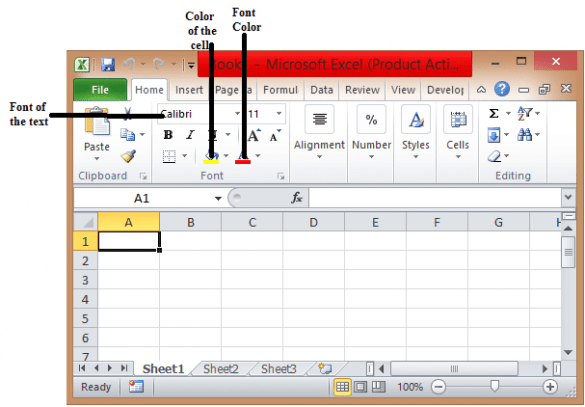3 Simple Ways to Rearrange Excel Sheets Quickly

Introduction to Rearranging Excel Sheets

Microsoft Excel, a tool widely recognized for its data manipulation capabilities, is often used to manage multiple sheets within a single workbook. There are various scenarios where you might need to rearrange these sheets, either to organize data more effectively, present information in a certain order, or simply for better workflow management. Here are three efficient methods to accomplish this task:
Method 1: Drag and Drop

One of the simplest ways to rearrange Excel sheets is by using the drag and drop technique:
- Open your Excel workbook and locate the sheet tabs at the bottom.
- Click on the tab of the sheet you want to move.
- Drag the sheet to its new position while holding down the left mouse button.
- Release the mouse button to drop the sheet into the desired spot.
Please ensure you have enough workspace by scrolling through the sheet tabs if needed.
⚠️ Note: This method is straightforward but can become cumbersome with many sheets.
Method 2: Right-Click Context Menu

If you prefer using a context menu for a more controlled approach:
- Right-click on the tab of the sheet you wish to move.
- From the context menu, choose Move or Copy…
- In the dialog box, select Before sheet and pick where you want your sheet to go.
- Click OK to apply the change.
This method provides a visual representation of where your sheet will be positioned.
Method 3: Keyboard Shortcuts

Keyboard enthusiasts can use shortcuts for quick sheet manipulation:
- Select the sheet you want to move by clicking on its tab.
- Use Ctrl + Page Up or Ctrl + Page Down to navigate between sheets.
- Hold Ctrl + Shift and then press Page Up or Page Down to move the selected sheet up or down respectively.
👌 Note: Keyboard shortcuts can significantly speed up the process once you’re familiar with them.
Ensuring Smooth Operation

While rearranging sheets, keep these points in mind:
- Avoid moving sheets with complex formulas or references without understanding the impact.
- Save your workbook frequently to prevent data loss.
- If dealing with very large datasets, ensure your computer has enough processing power to handle the rearrangements smoothly.
By following these methods, you can manage your Excel sheets with ease, enhancing productivity and data organization.
The key points to remember from this post include:
- Drag and drop is intuitive but can be tricky with many sheets.
- The context menu method provides a visual interface for moving sheets.
- Keyboard shortcuts offer speed once you get accustomed to them.
Mastering these methods will undoubtedly make your Excel tasks more efficient, allowing you to focus more on analysis and less on data management.
Can I rearrange sheets in Excel for Mac?

+
Yes, Excel for Mac supports the same methods for rearranging sheets as Excel for Windows, including drag and drop, right-click menu, and keyboard shortcuts.
What happens to references when I rearrange sheets?

+
When you move sheets, any references in formulas within those sheets adjust automatically to the new sheet locations. However, be cautious as external references might need manual updating.
How do I move a sheet to a different workbook?

+
To move a sheet to another workbook, you can use the Move or Copy… option from the right-click menu, select the destination workbook, and then choose the position.
Can I reorder sheets in bulk?

+
Yes, by selecting multiple sheets using the Shift or Ctrl key, you can move them all at once using drag and drop or the context menu method.
What if I accidentally delete a sheet?

+
If you accidentally delete a sheet, you can use the Undo feature (Ctrl + Z) to restore it, provided you haven’t saved the workbook since the deletion. Alternatively, if you have a backup, you can recover from there.